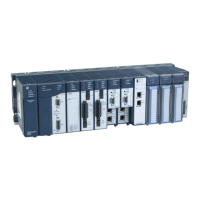Chapter 3. Communication Requirements
GFK-2904D July 2018 9
3.2 Service Requests
The Service Request protocol from GE Automation & Controls is a proprietary, media-independent application
protocol that provides access to services of GE Automation & Controls products. This is the primary protocol
used by Proficy Machine Edition: Logic Developer – PLC when communicating with a PACSystems CPU. It
supports many different operations, including:
• Upload /Download the user application & configuration to the Controller.
• Start/Stop the Controller.
• Read, write, verify, or clear Flash/EEPROM memory.
• Clear Controller memory.
• Gather diagnostic info from a Controller.
• Verify Equality.
• View and, in some cases, set the target Controller's operating parameters: device information,
memory usage, date and time, reference points/words, access levels, passwords and OEM key, and
sweep information.
• View and optionally clear a log of any faults that have occurred in the Controller. The Service Request
protocol is transported over a specific media by encapsulating it within a media-specific protocol.
Specifically, SNP is used for transporting it over a serial channel. Almost all SNP transmissions contain
at least a portion of a Service Request/Reply embedded within them.
Supporting communication between any two nodes using Service Requests requires that the system support
communicating using a media-specific protocol such as SNP between those two nodes.
SNP
Firmware Update: The SNP protocol is often used in PROFINET I/O Devices from GE Automation & Controls to
support updating the firmware on products or on an installed module that supports having its firmware
updated over the backplane. SNP is used to send Service Requests to a node via a serial connection, and to
convey the results back to the client.

